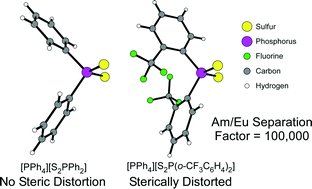NMR spectroscopy and structural characterization of dithiophosphinate ligands relevant to minor actinideextraction processes
Abstract
Synthetic routes to alkyl and aryl substituted ![[double bond, length as m-dash]](https://www.rsc.org/images/entities/char_e001.gif) S double bonds and long P–
S double bonds and long P–

* Corresponding authors
a
Los Alamos National Laboratory, Los Alamos, New Mexico 87545, USA
E-mail:
stosh@lanl.gov
b Idaho National Laboratory, Idaho Falls, Idaho, USA
Synthetic routes to alkyl and aryl substituted ![[double bond, length as m-dash]](https://www.rsc.org/images/entities/char_e001.gif) S double bonds and long P–
S double bonds and long P–

 Please wait while we load your content...
Something went wrong. Try again?
Please wait while we load your content...
Something went wrong. Try again?
S. R. Daly, J. R. Klaehn, K. S. Boland, S. A. Kozimor, M. M. MacInnes, D. R. Peterman and B. L. Scott, Dalton Trans., 2012, 41, 2163 DOI: 10.1039/C1DT11637A
To request permission to reproduce material from this article, please go to the Copyright Clearance Center request page.
If you are an author contributing to an RSC publication, you do not need to request permission provided correct acknowledgement is given.
If you are the author of this article, you do not need to request permission to reproduce figures and diagrams provided correct acknowledgement is given. If you want to reproduce the whole article in a third-party publication (excluding your thesis/dissertation for which permission is not required) please go to the Copyright Clearance Center request page.
Read more about how to correctly acknowledge RSC content.
 Fetching data from CrossRef.
Fetching data from CrossRef.
This may take some time to load.
Loading related content
